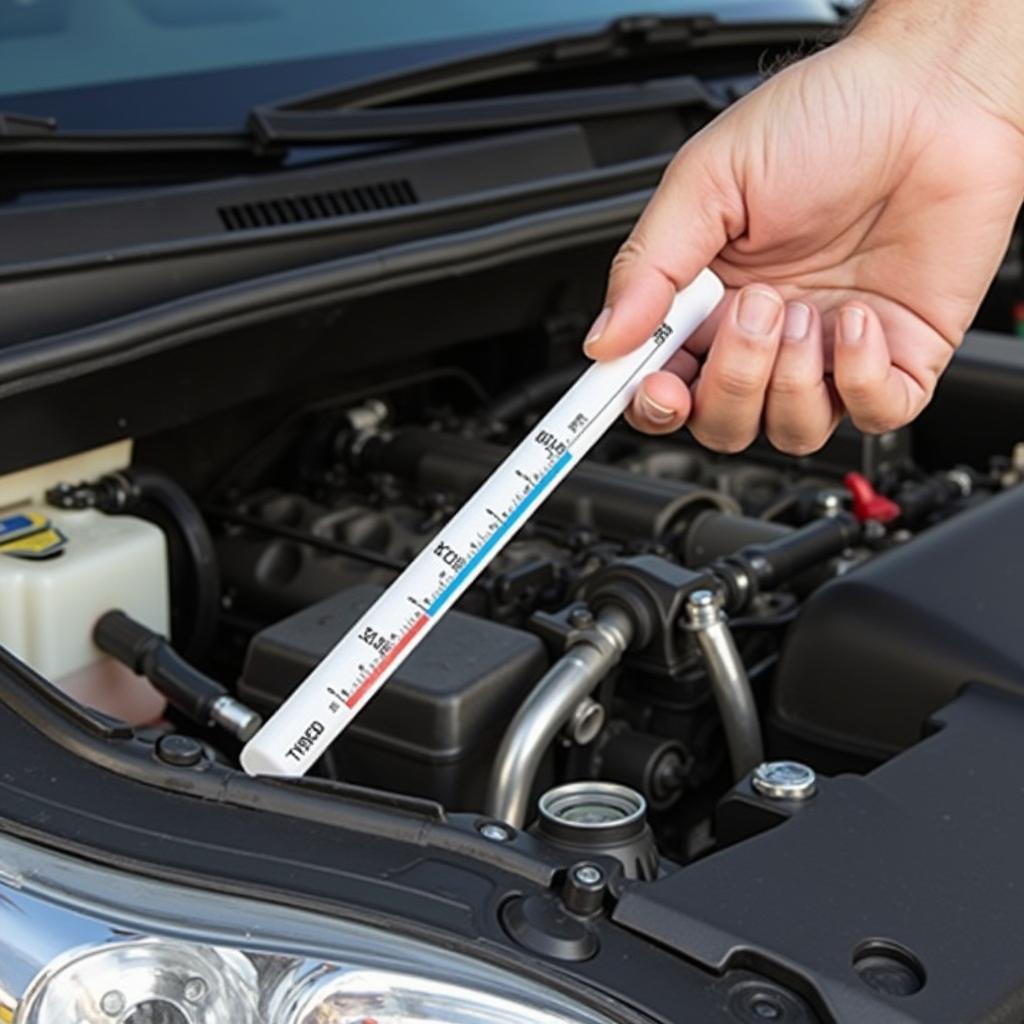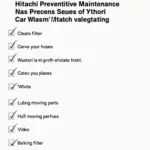Knowing how to service a car is a valuable skill that can save you money and keep your vehicle running smoothly. Whether you’re looking for a quick wikihow-style guide or a more in-depth understanding of car maintenance, this article will equip you with the knowledge to perform basic car servicing tasks. We’ll cover essential checks and procedures, helping you understand how to service a car like a pro.
Essential Checks Before You Start
Before diving into how to service a car, it’s crucial to gather the necessary tools and ensure a safe working environment. Park your car on a level surface, engage the parking brake, and gather your tools. Essential tools include a wrench set, screwdrivers, pliers, jack stands, and a drain pan. Safety glasses and gloves are also highly recommended.
Checking Fluids
Checking your car’s fluids is the first step in any car service. This includes engine oil, coolant, brake fluid, power steering fluid, and transmission fluid. Each fluid has a specific dipstick or reservoir, and you should consult your owner’s manual for the correct levels. Low fluid levels can indicate leaks or other issues that require professional attention.
Inspecting Belts and Hoses
Rubber belts and hoses are essential for various systems in your car, including the alternator, power steering, and cooling system. Inspect them for cracks, wear, or looseness. A worn belt can snap, leading to significant problems, while a leaking hose can cause fluid loss and overheating.
How to Change Your Oil
Changing your car’s oil is one of the most fundamental car service tasks. It involves draining the old oil, replacing the oil filter, and adding new oil. This process typically requires a wrench to remove the drain plug, an oil filter wrench, and a funnel.
- Warm up the engine: A warm engine allows the oil to flow more easily.
- Locate the drain plug: Consult your owner’s manual for its location.
- Drain the old oil: Place a drain pan beneath the drain plug and carefully remove it.
- Replace the oil filter: Remove the old filter and lubricate the gasket of the new filter before installing it.
- Refill with new oil: Add the correct amount of oil as specified in your owner’s manual.
- Check the oil level: Use the dipstick to ensure the oil level is within the recommended range.
What Type of Oil Should I Use?
The type of oil recommended for your car is specified in your owner’s manual. Using the wrong type of oil can damage your engine. Common oil types include conventional, synthetic blend, and full synthetic.
How to Check Your Tire Pressure
Proper tire pressure is crucial for safety and fuel efficiency. Use a tire pressure gauge to check the pressure in each tire, including the spare. The recommended tire pressure is usually found on a sticker inside the driver’s side doorjamb or in your owner’s manual.
How Often Should I Check My Tire Pressure?
It’s a good practice to check your tire pressure monthly and before long trips. Underinflated tires can lead to decreased fuel economy and increased risk of blowouts.
How to Service a Car: Air Filter Replacement
The air filter prevents dust and debris from entering the engine. A dirty air filter can restrict airflow and reduce engine performance. Replacing the air filter is a relatively simple task that can be done with basic tools.
Inspecting Brakes
Checking your brakes is a crucial safety aspect of car servicing. While a thorough brake inspection may require professional expertise, you can visually inspect the brake pads and rotors for wear. If you notice any significant wear or hear grinding noises, it’s essential to have your brakes checked by a mechanic.
Conclusion
Knowing how to service a car empowers you to maintain your vehicle and address basic maintenance needs. While this wikihow-style guide provides a foundation for DIY car service, it’s essential to consult your owner’s manual for specific instructions and recommendations for your car model. Remember, regular car servicing not only extends the life of your vehicle but also ensures a safer and more enjoyable driving experience.
FAQ
- How often should I service my car? Refer to your owner’s manual for recommended service intervals.
- Can I service my car myself? Yes, you can perform basic maintenance tasks, but complex repairs are best left to professionals.
- What are the benefits of regular car servicing? Regular servicing improves performance, fuel efficiency, and safety.
- How do I choose the right oil for my car? Your owner’s manual specifies the recommended oil type and viscosity.
- What should I do if I notice a leak under my car? Consult a mechanic immediately to diagnose and repair the leak.
Need further assistance with car diagnostics and servicing? Contact us via WhatsApp: +1(641)206-8880 or Email: [email protected]. Our 24/7 customer support team is ready to help. Check out our other helpful articles on CarServiceRemote for more in-depth information on car maintenance and repair.

